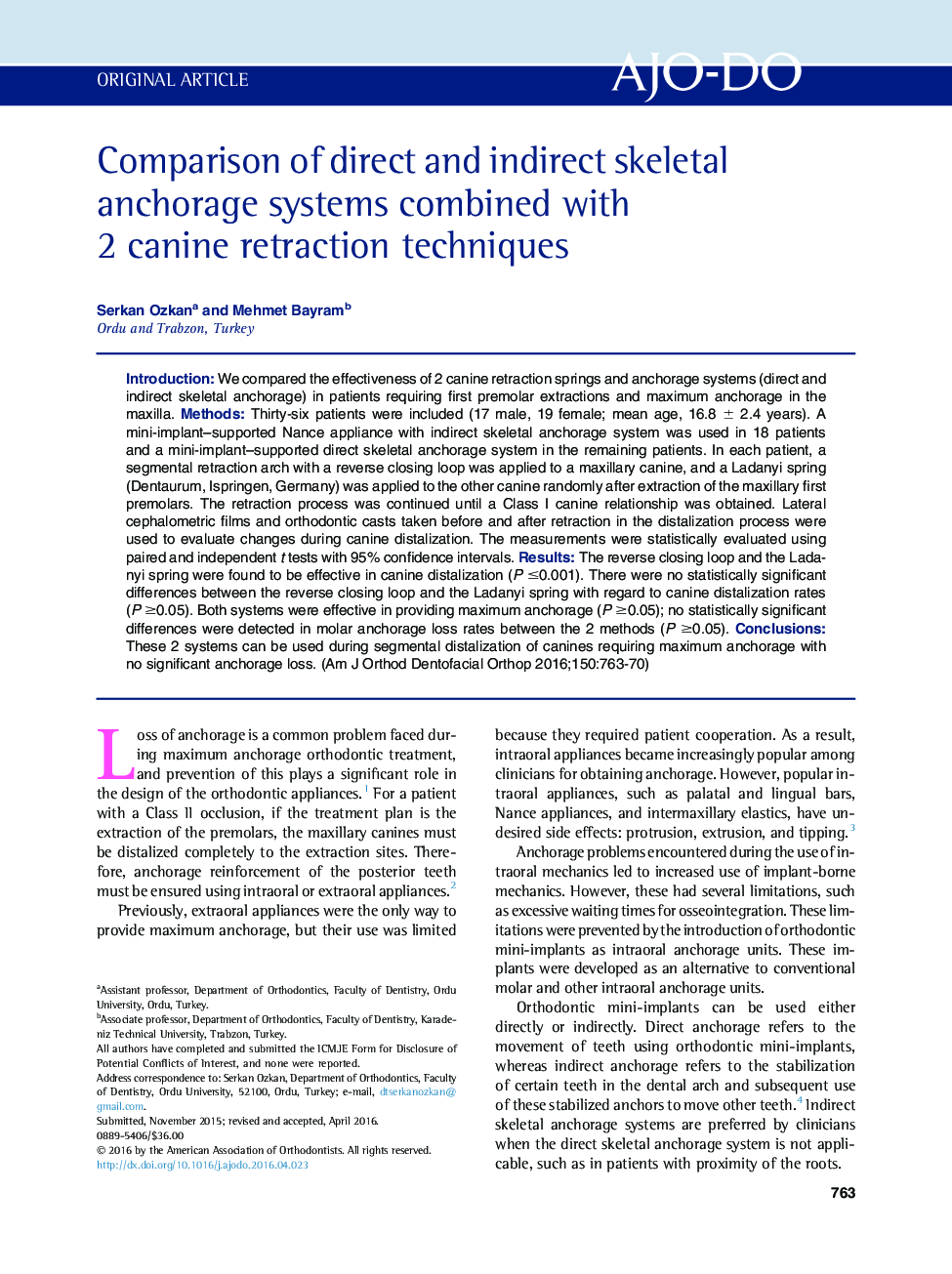| کد مقاله | کد نشریه | سال انتشار | مقاله انگلیسی | نسخه تمام متن |
|---|---|---|---|---|
| 5637756 | 1582670 | 2016 | 8 صفحه PDF | دانلود رایگان |
- Orthodontic mini-implants provide direct or indirect skeletal anchorage.
- Indirect systems are preferred in patients with proximity of the roots.
- MaxVP-U6 did not differ in the skeletal anchorage and spring groups.
- Retraction speed did not differ in the retraction and skeletal anchorage groups.
- Total tooth movement did not differ in the retraction and skeletal anchorage groups.
IntroductionWe compared the effectiveness of 2 canine retraction springs and anchorage systems (direct and indirect skeletal anchorage) in patients requiring first premolar extractions and maximum anchorage in the maxilla.MethodsThirty-six patients were included (17 male, 19 female; mean age, 16.8 ± 2.4 years). A mini-implant-supported Nance appliance with indirect skeletal anchorage system was used in 18 patients and a mini-implant-supported direct skeletal anchorage system in the remaining patients. In each patient, a segmental retraction arch with a reverse closing loop was applied to a maxillary canine, and a Ladanyi spring (Dentaurum, Ispringen, Germany) was applied to the other canine randomly after extraction of the maxillary first premolars. The retraction process was continued until a Class I canine relationship was obtained. Lateral cephalometric films and orthodontic casts taken before and after retraction in the distalization process were used to evaluate changes during canine distalization. The measurements were statistically evaluated using paired and independent t tests with 95% confidence intervals.ResultsThe reverse closing loop and the Ladanyi spring were found to be effective in canine distalization (P â¤0.001). There were no statistically significant differences between the reverse closing loop and the Ladanyi spring with regard to canine distalization rates (P â¥0.05). Both systems were effective in providing maximum anchorage (P â¥0.05); no statistically significant differences were detected in molar anchorage loss rates between the 2 methods (P â¥0.05).ConclusionsThese 2 systems can be used during segmental distalization of canines requiring maximum anchorage with no significant anchorage loss.
Journal: American Journal of Orthodontics and Dentofacial Orthopedics - Volume 150, Issue 5, November 2016, Pages 763-770
